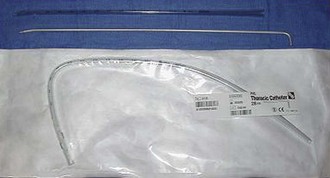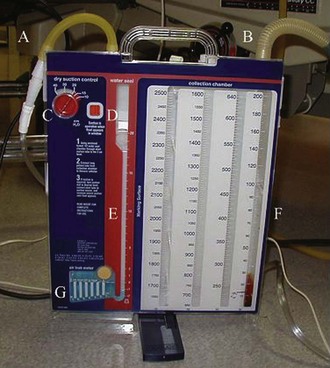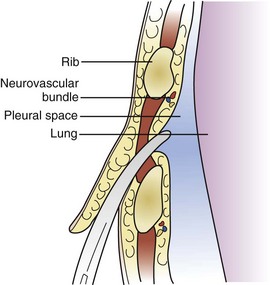W12 Chest Tube Placement, Care, and Removal
 Before Procedure
Before Procedure
Contraindications
Equipment

Figure W12-1 Standard chest tube (top) with trocar (middle) and angled chest tube (bottom) without trocar.
 Anatomy
Anatomy
Entry into the pleural space should generally be gained via a location based on ease of access, safety, and avoidance of complications. The American College of Surgeons Committee on Trauma recommends drain insertion between the anterior and posterior axillary lines at a level with or just above the fifth intercostal space (nipple level). In this location, the chest wall is thinnest, and the operator can avoid the pectoralis major muscle and breast parenchyma (anteriorly), the latissimus dorsi muscle (posteriorly), the axillary vessels/brachial plexus (superiorly), and the diaphragm/intraabdominal contents (inferiorly). Within the intercostal space, coursing along the inferior surface of each rib is the neurovascular bundle. Insertion of the tube over the superior aspect of the rib is recommended so that injury to these structures can be avoided (Figure W12-3). From superficial to deep, one will first encounter skin, followed by a variable amount of subcutaneous tissue, the superior surface of the rib, the intercostal space with its musculature, and finally the parietal pleura. The pulmonary parenchyma and mediastinal structures are deep to the parietal pleura, so it is important to avoid overzealous insertion of the chest tube. In some instances (e.g., a loculated collection), specialized placement may be required, and the assistance of a surgeon or insertion under image guidance is encouraged.
 Procedure
Procedure

Full access? Get Clinical Tree


















